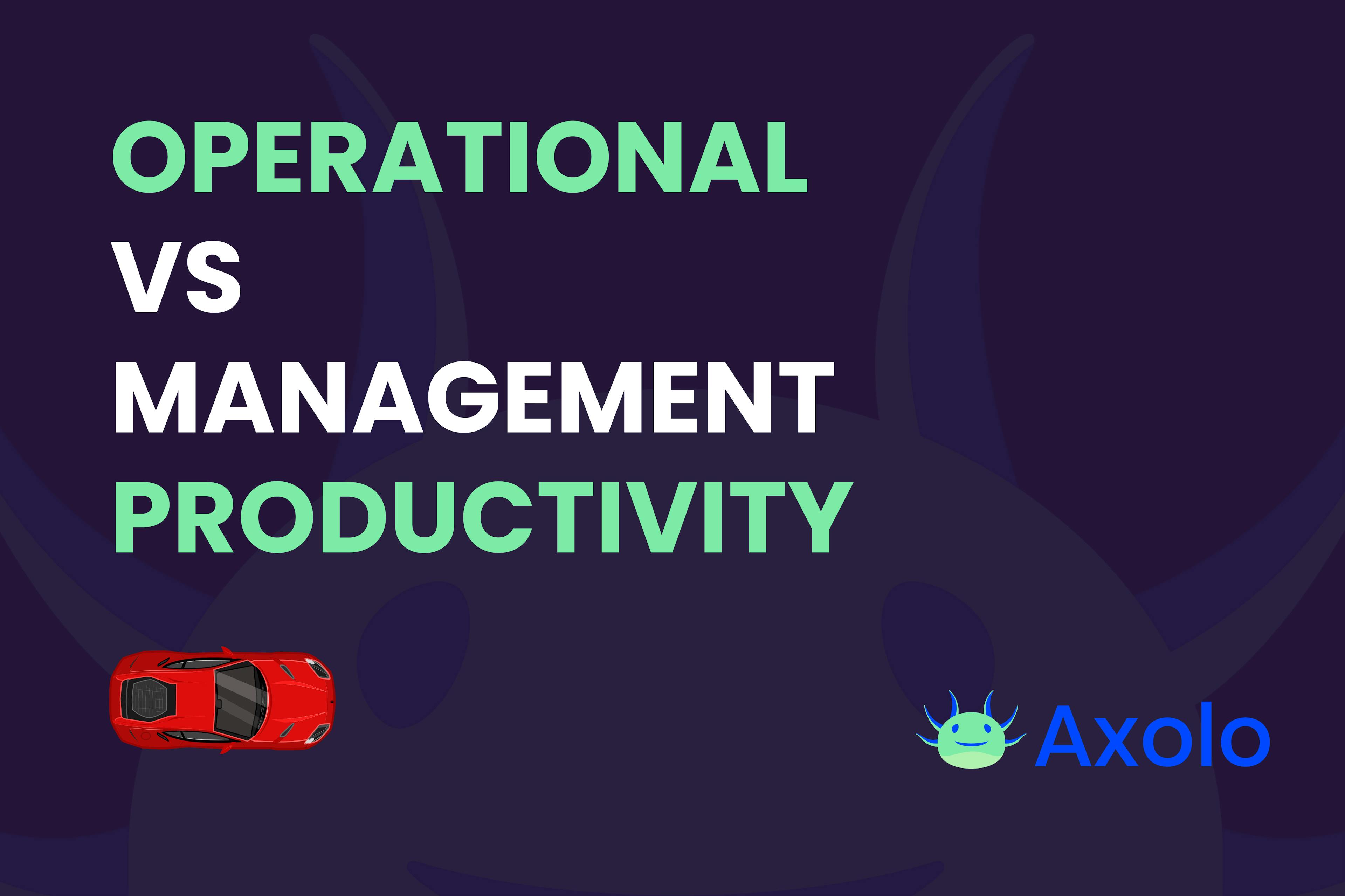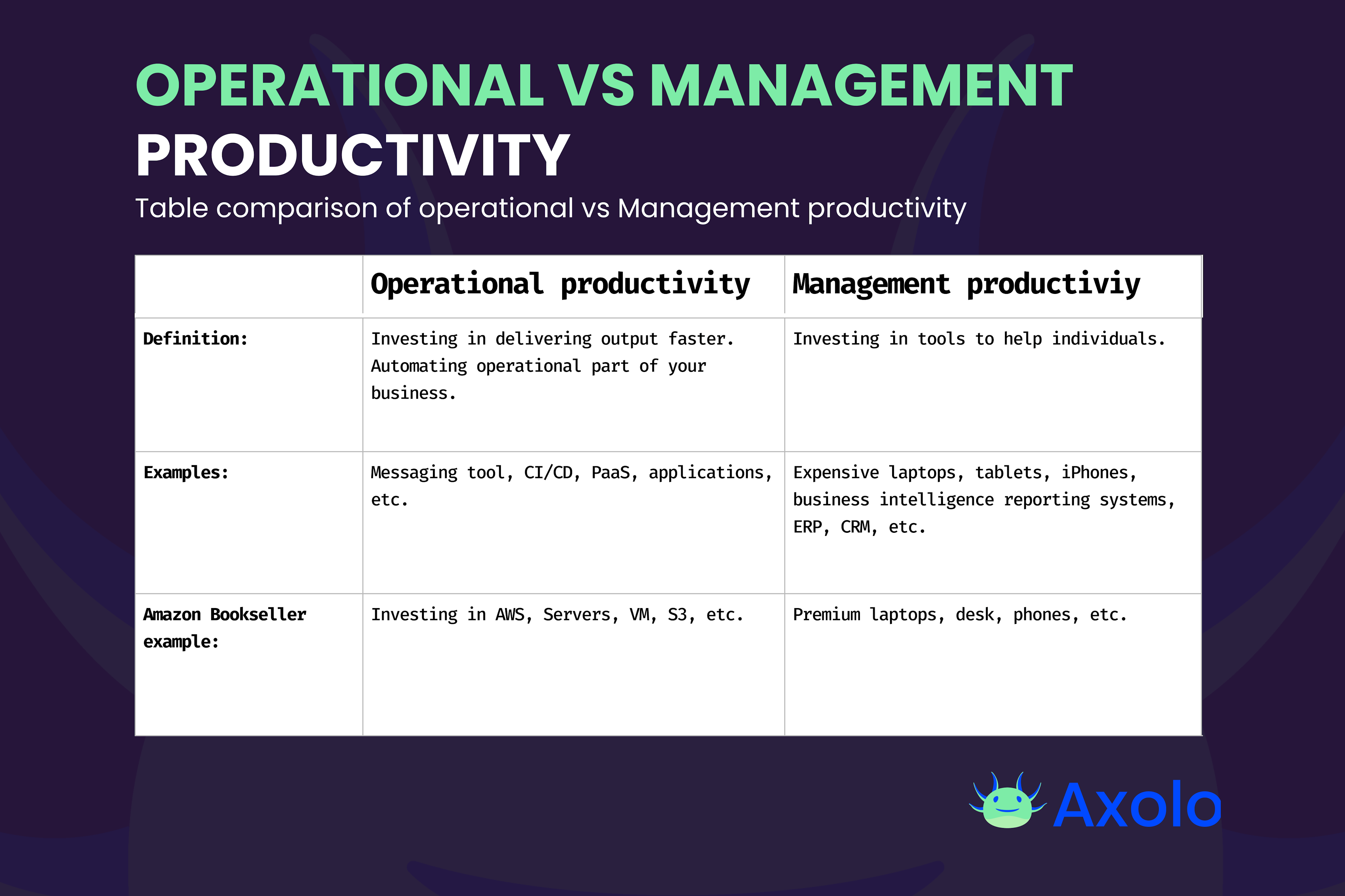- Published
Operational vs Management productivity

Steve Jobs said he wasted the first 10 years focusing on management productivity. PCs and Macs never attacked operational productivity. At the time you couldn't just buy a Mac or a PC that would help you deliver output faster. You also had to either build or find the right software to run on those machines.
Steve Jobs was inspired by Paul A. Strassman; Who wrote a book called The business value of computers where Paul researched the investment made by the most successful companies to the less successful ones. He went on to those companies and asked two questions.
- How much do companies spend on IT in percentage of their revenue? Surprisingly he found out that most companies were spending, on average, the same amount of revenue share in IT, which was on average 2%.
But what he found is how different the most successful company spends their money compared to the less successful ones.
- How do you spend your money in IT?
- The less successful company spends most of their money on management productivity. Management productivity is characterized by expensive computers and any tools or items to help individuals.
- The most successful company spent more money on operational productivity. Meaning that they invested in delivering output faster, and automating the operational part of their business.

Table comparison of operational vs Management productivity
| Operational productivity | Management productivity | |
|---|---|---|
| Definition | Investing in delivering output faster. Automating operational part of your business | Investing in tools to help individuals |
| Examples | Messaging tool, CI/CD, PaaS, applications, etc. | Expensive laptops, tablets, iPhones, business intelligence reporting systems, ERP, CRM, etc. |
| Amazon Bookseller example | Investing in AWS, Servers, VM, S3, etc. | Premium laptops, desk, phones, etc. |

3 Steps on using this rationale for your business
1. Understand how to operate your business faster and how you can bring more value to your customers.
Selling books online, Amazon knows that:
- They will always need to be delivering books faster.
- A better experience online
2. Measure this value as a KPI (Key Performance Indicator)
For Amazon, you can:
- Measure how much time it takes for a book to reach a customer on average.
- Run NPS (net promoter score) surveys on your customers to know how they feel about your service.
- Look at average spending and see if your customers are spending more over time.
3. Invest in technology or services that have the potential to increase those KPIs
In the Amazon example, Amazon invested heavily in:
- Making logistics faster, investing in warehouses and delivery services of their own to control and improve the whole flow.
- Online services with AWS, which later made it available to any company.
operational productivity is usually Your Team is Only as Fast as Your Slowest Member
Communication in your team

This image represents the number of lines of communication depending on the number of people in your team.
Axolo as an operational productivity tool
Your company builds software. The more software update you deliver, the more value you bring to your customers.
At Axolo, our goal is to help tech teams be more productive through efficient communication and collaboration. We do that by bringing the conversation from code hosting tools to your favorite messaging tool: Slack.
Being able to communicate seamlessly has proven to help review pull request faster, merge faster and thus bring updates faster in the hands of your customers.
If you are building software in your company we believe that Axolo is an operational productivity investment that will help your team operate faster.
Axolo is a Slack app to help techteams review pull request seamlessly
Sources: